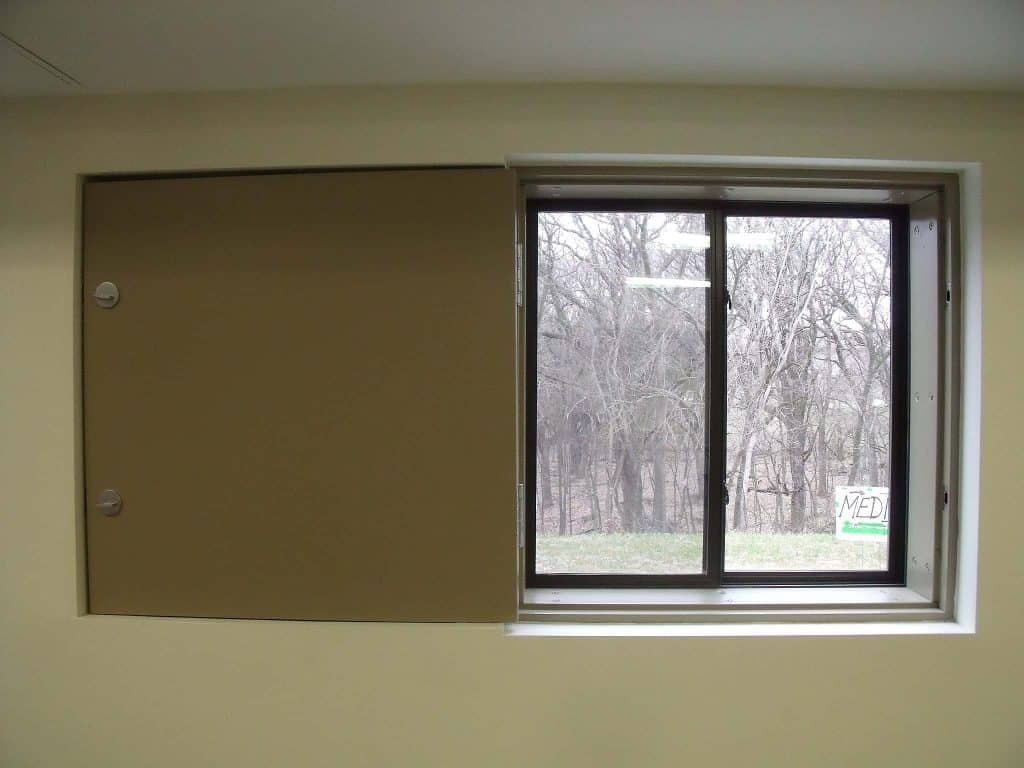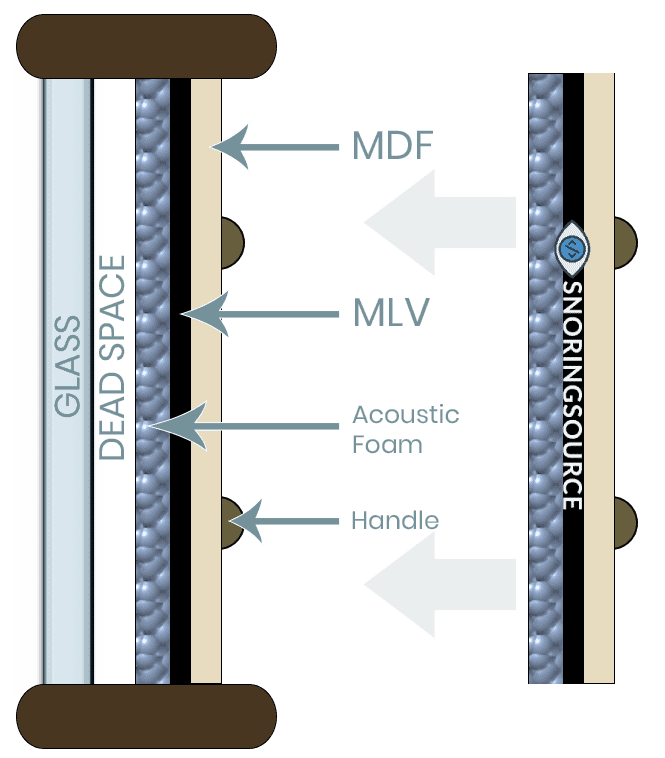Windows are a wonderful addition to any space. They fill the interior of the room with natural light and allow fresh air to come in. Not to mention they're often a code requirement in most areas.
Despite the many benefits that windows provide, they aren’t exactly the best sound barriers. While there are several different ways that you can soundproof a window, window plugs are one of the most effective options.
In order for a window plug to be effective, it needs to be able to prevent the transmission of soundwaves. In order to accomplish this, window inserts are constructed of viscoelastic material to help damp resonance.
The mass/density of the material will help to decrease the movement of sound. If constructed properly, it should also create a tight seal which will create dead space that traps and deadens low frequencies.
While window plugs are one of the most effective soundproofing solutions for windows, they aren't exactly practical for most use cases.

A window plug is either a permanent or removable insert that sits on the inside of the window. It helps to prevent air, noise, and light from entering and exiting a space.
Glass is notorious for having a low sound transmission class (STC), the rating that is used to indicate how well a structural element attenuates airborne noise.
Soundproof window plugs increase the STC of a window, and as such, they effectively reduce unwanted noise transmission; in other words, they effectively prevent soundwaves from traveling in and out of your windows.
While soundproof windows exist in the form of double/triple pane or laminated glass, not only are they expensive, but so is the process of replacing your existing windows.
Window inserts also act as a thermal insulator as they're able to seal gaps that allow for heat transfer to occur.
While window plugs can effectively soundproof a window and prevent thermal energy loss, there is one downside: they block out the view and prevent light from coming through the window.
As mentioned, window plugs can be either permanent or removable, so if you still want to use the window for its intended purpose, a removable plug is a much better option.
Soundproof window plugs are usually made of highly dense materials. These types of materials have mass, and that mass helps to block out noise.
Materials that are viscoelastic in nature are popular. For instance mass loaded vinyl and it's many alternatives. As well as materials like Green Glue soundproofing compound.
It's important to note that materials like MLV do not have sound absorbing qualities, rather they're used for damping. Damping a sound is the reduction of resonance through reflection and diffusion. This means that sound is dissipated before it has the potential to build up.
Viscoelasticity describes two concepts: viscosity and elasticity.
Materials like MLV and Green Glue can do both. They flow when a force is applied to them and then return to their original shape when the force is removed.
MLV is essentially a reflective sound barrier, it does not have absorption qualities. This means it can keep sound confined to a space as well as prevent it from transmitting to adjoining spaces.
These materials may be attached to a structural support, such as medium density fiberboard (MDF), plywood, or oriented strand board (OSB). MDF is a heavy material that will help to block and reflect sound-waves whereas plywood and OSB won't.
However, do note that not all window plugs will require structural support. It largely depends on the size of the window; for example, smaller windows may not need the support, but larger windows likely will.
A cause for concern can be the aesthetics of the plug. Simply investing in a solid color or print fabric to adhere to the back of the plug should suffice.
Any of the above-mentioned panels or mats can be used to construct a window plug, though a combination of the above materials will result in better sound absorption and reflective properties.
If the window plug is going to be a permanent structure, you may consider adding a layer of reflective film to the side of the plug that will be pressed up against the window.
This will allow sunlight to bounce off the plug and minimize the amount of heat buildup in the space between the plug and the window pane. This is particularly important for window plugs that will be placed over windows that face the south and the west.

The style of and window and it's size are the two most important factors to consider when creating a window plug.
For instance, some windows feature an exterior sill and are flush or near flush with the interior wall. Some are the opposite and feature a deep interior window well and no exterior sill.
*Consider using weatherstripping on the inside of the window frame to help create a snug fit and to prevent air leaks.
Window plugs offer several benefits, the most notable of which include:
They can significantly reduce the transmission of soundwaves.
Window plugs seal gaps around the window, which helps to minimize thermal energy loss. Meaning, they prevent conditioned and heated indoor air from traveling out of the window and prevent hot and cold outdoor air from traveling into the window.
Since they block out light, window plugs can help to prevent your furniture, flooring, and decorative elements from becoming faded or discolored.
They’re a much more cost-effective option than soundproofing windows or hanging additional windows.
Though window plugs do provide a number of benefits, there are a few downsides that should be kept in mind:
Depending on the materials and construction, they may not be able to block out low-frequency sounds, so they may not be able to block out all unwanted noise.
The larger they are, the bulkier they are. Big, bulky soundproof window plugs can be difficult to move and hard to store.
When they are in place, the window cannot be used; meaning that you cannot open the window for fresh air, you can’t see through the window, and sunlight will not pass through the window.
For these reasons, we highly recommend engineering the insert to be removable.
If you’re looking for a budget-friendly way to prevent noise from traveling through your windows, consider using window plugs.
These structures can prove to be a very effective soundproofing solution for windows. They're also a much more cost-effective option than replacing an existing window.

Snoringsource.com is a participant in the Amazon Services LLC Associates Program, an affiliate advertising program designed to provide a means for website owners to earn advertising fees by advertising and linking to amazon(.com, .co.uk, .ca etc) and any other website that may be affiliated with Amazon Service LLC Associates Program.